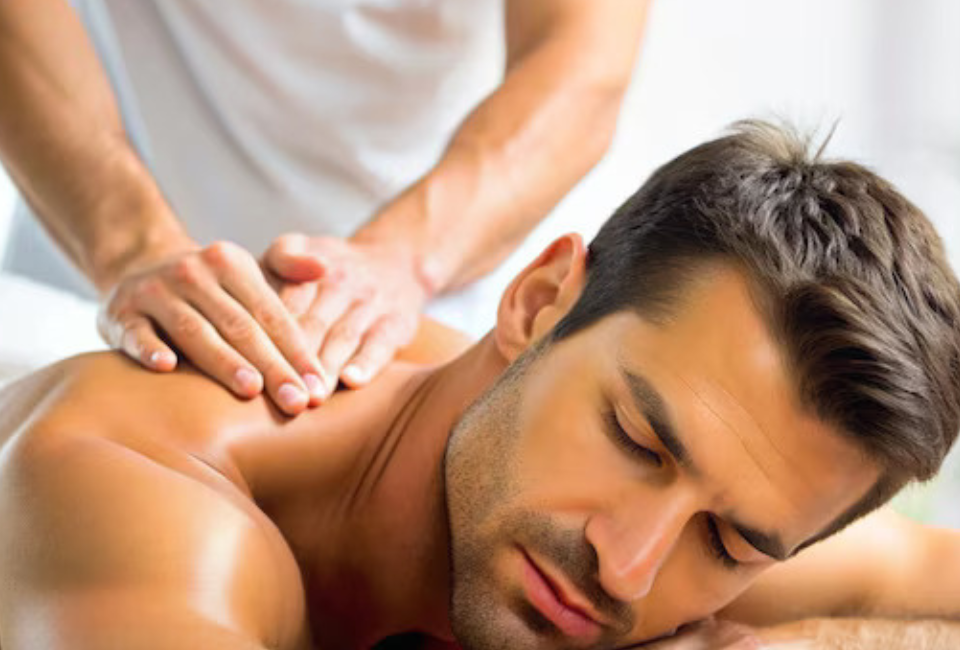- Relieve Stress , Enhance Your Looks
- +91-77373 55124
- palmsspa5670@gmail.com
Benefits of Foot Reflexology and Massage Therapy

Traditional Thai Massage: Meaning, Benefits, and Healing Effects
March 3, 2025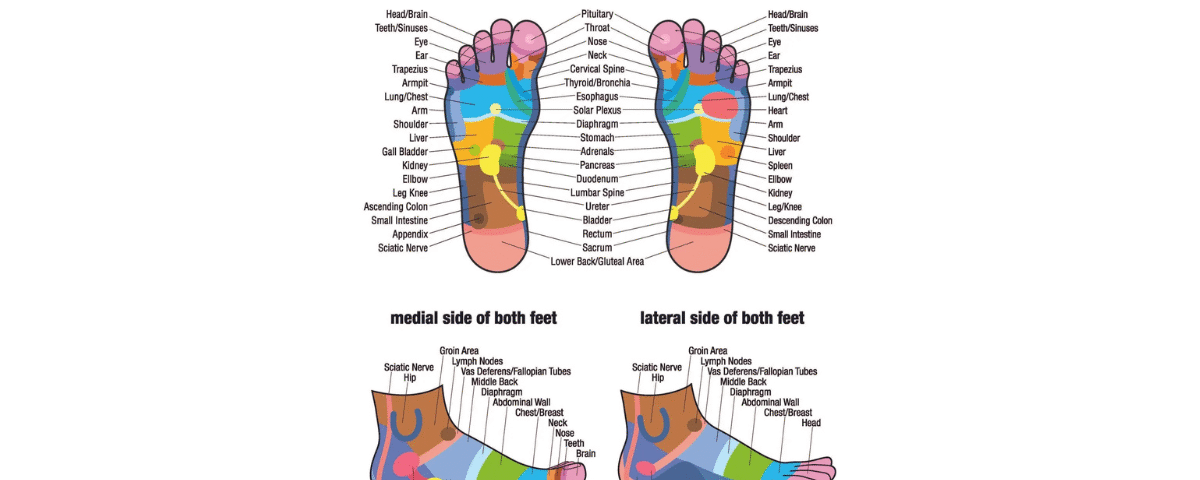
"Relax, Heal, Rejuvenate – Through the Power of Foot Reflexology"
Understanding Foot Reflexology
Foot reflexology is an ancient practice rooted in Traditional Chinese Medicine. It involves stimulating specific pressure points on the feet, which are believed to correspond to different organs and systems in the body. Reflexology therapy is increasingly being recognized as a supportive treatment for promoting overall well-being.
Unlike general foot massage, foot reflexology focuses on activating right foot pressure points to clear blockages and restore internal balance.
Table of Contents
What is Reflexology Therapy?
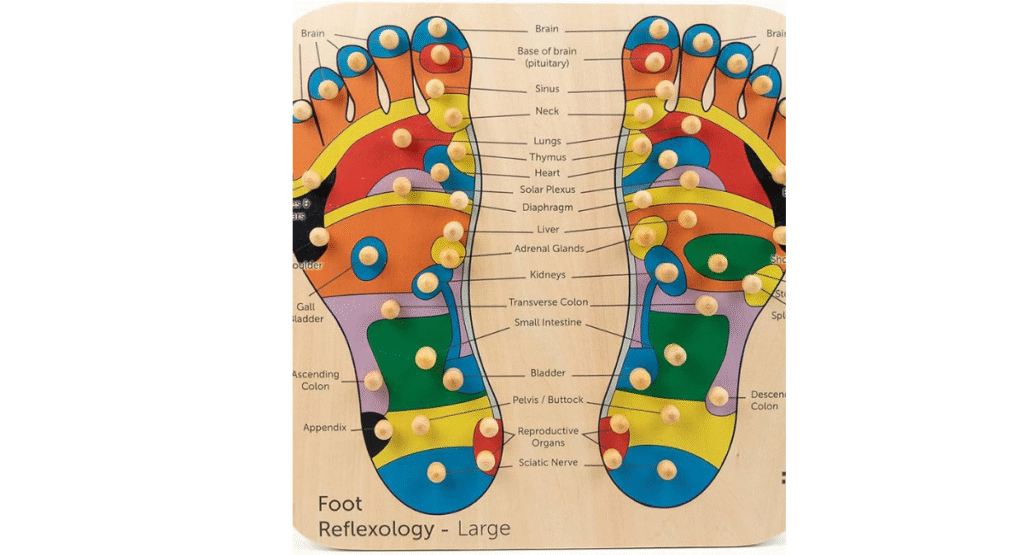
The Concept Behind Reflexology
Reflexology therapy operates on the principle that the feet mirror the entire body. By applying pressure to reflexology feet zones, practitioners believe they can influence the corresponding body parts, such as the heart, lungs, liver, and spine.
This approach is not just a foot massage technique, but a therapeutic process meant to stimulate healing energy and blood circulation.
Right Foot Pressure Points and Their Roles
Each foot contains over 7,000 nerve endings, and reflexologists target specific zones such as:
- Toes for brain and head functions
- Arch for digestive organs
- Heel for the lower back and sciatic nerve
Focusing on right foot pressure points can relieve tension in the liver, gallbladder, and other vital organs.
Foot Massage Techniques in Reflexology

Effective Reflexology Treatment Methods
Foot massage techniques used in reflexology therapy include:
- Thumb walking: Gentle walking motion of the thumbs across the foot
- Finger rotation: Pressing and rotating on a point to release tension
- Hook and backup: Digging in and pulling back for deep stimulation
These foot massage techniques not only ease muscular stiffness but also promote energy flow across reflexology feet.
Top Benefits of Reflexology Treatment
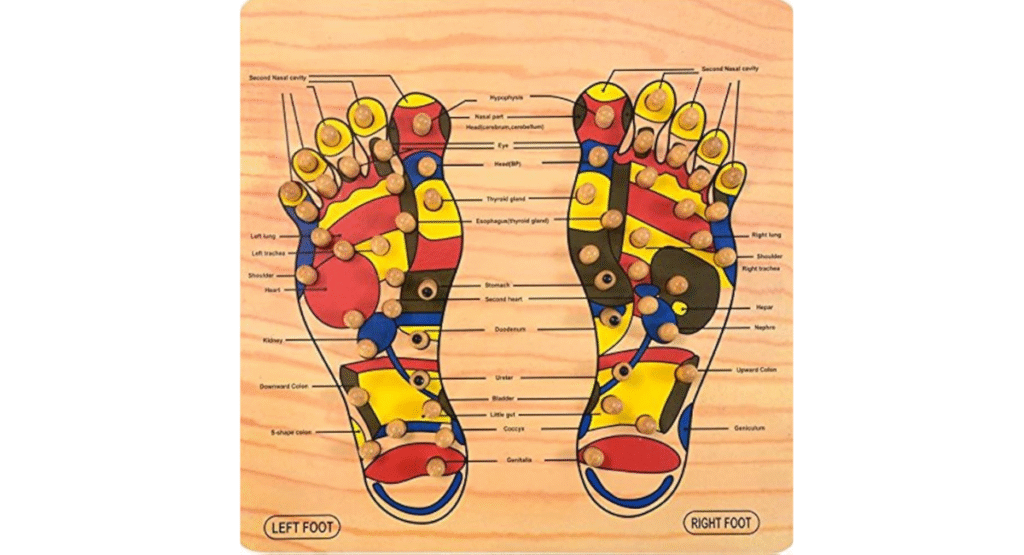
1. Pain Management
People suffering from chronic pain often turn to reflexology treatment as a complementary solution. Research shows foot reflexology may reduce:
- Back pain
- Headaches
- Nerve-related discomfort (neuropathy)
By targeting right foot pressure points, endorphins—the body’s natural painkillers—may be released during sessions.
2. Stress Relief and Mental Clarity
Reflexology therapy helps reduce cortisol levels, a hormone linked to stress. By applying foot massage techniques, patients often experience relaxation, improved mood, and mental clarity. Reflexologists claim that when reflexology feet are stimulated, it calms the nervous system.
3. Better Sleep
Insomnia and irregular sleep cycles may be improved with regular reflexology treatment. Stimulating the right foot pressure points for the pineal gland and brain helps balance melatonin, the sleep hormone.
4. Enhanced Digestion
Some practitioners report improved digestive function through pressure applied to specific reflexology feet zones linked to the stomach, intestines, and colon. These foot massage techniques can aid detoxification and nutrient absorption.
5. Boosted Circulation
Foot reflexology enhances blood flow, especially in extremities. Good circulation supports oxygen delivery and toxin removal, especially important for those with diabetes or hypertension.
Special Applications of Foot Reflexology
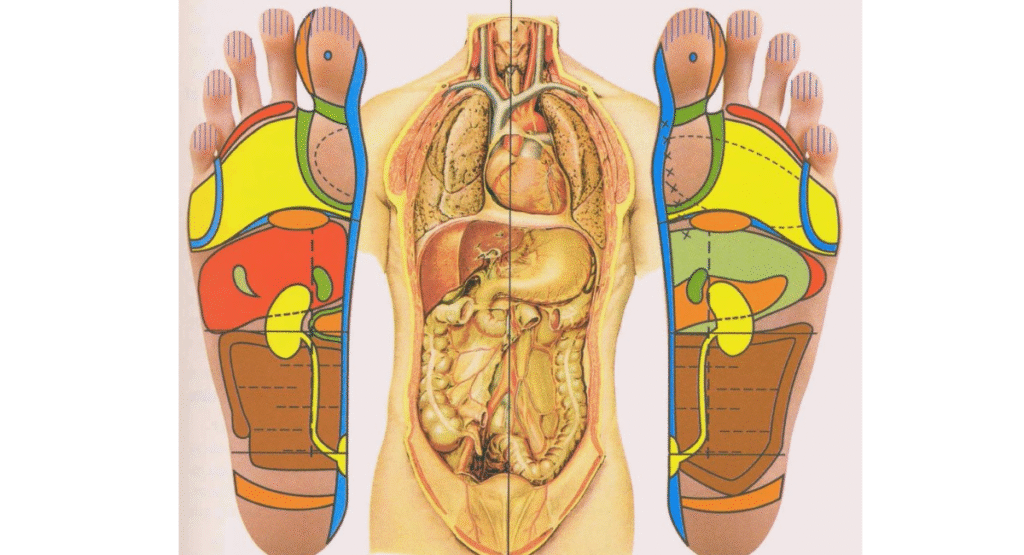
Foot Reflexology for Diabetes
For people with diabetic foot complications, reflexology therapy may help:
- Improve circulation
- Reduce pain
- Promote skin and nerve health
While not a replacement for medication, reflexology treatment complements standard care.
Foot Reflexology for Asthma and Hypertension
Stimulating the lungs and diaphragm points on reflexology feet may help those with respiratory issues. Similarly, high blood pressure patients may benefit from focused foot massage techniques aimed at calming the cardiovascular system.
Foot Reflexology vs. Regular Foot Massage
| Feature | Foot Massage | Foot Reflexology Focus |
| Focus | Muscles and tissues | Energy zones and pressure points |
| Goal | Relaxation and muscle relief | Whole-body balance and healing |
| Techniques | Rubbing, kneading | Pointed pressure, thumb walking |
Unlike a standard foot massage technique, reflexology therapy doesn’t just relax—it stimulates the body’s self-healing abilities.
Are Reflexology Pressure Points Scientifically Valid?
Many users of reflexology treatment report physical and emotional benefits. While more rigorous studies are needed, the positive impact on mood, sleep, and pain control supports its role as a wellness therapy.
Mapping right foot pressure points is based on thousands of years of traditional knowledge, now being studied more in modern clinical settings.
How to Prepare for Reflexology Therapy
What to Expect
Before a session:
- Remove shoes and socks
- Sit or lie down comfortably
- Expect pressure—not pain
Aftercare
After a session of foot reflexology, you may feel:
- Tired
- Slightly nauseous
- Emotionally sensitive
- An urge to urinate
These temporary symptoms show the body is responding and rebalancing.
Who Should Avoid Foot Reflexology?
Despite the benefits of reflexology therapy, it’s not recommended for:
- Pregnant women (especially in the first trimester)
- People with foot injuries, infections, or inflammation
- Those with serious conditions like cancer or heart failure
- Individuals with clotting disorders
Always consult a healthcare provider before starting reflexology treatment.
Is Reflexology Therapy Right for You?
If you’re curious about holistic healing or have tried traditional therapies with limited results, foot reflexology might be worth exploring. Its focus on reflexology feet, healing energy, and targeted foot massage techniques make it a gentle and effective practice for many conditions.
Conclusion
From relieving pain and stress to improving digestion and sleep, reflexology therapy provides numerous health benefits without invasive procedures. The precise stimulation of right foot pressure points makes foot reflexology a unique therapy rooted in both tradition and emerging science.
If you’re seeking a balanced approach to well-being, consider trying this therapeutic art. Whether you’re a wellness enthusiast or someone visiting Rajasthan, exploring Massage Therapies in Udaipur including expert reflexology treatment—can transform your physical and emotional health one step at a time.
FAQ’s
What is the purpose of foot reflexology?
Foot reflexology aims to promote healing and relaxation by applying pressure to specific points on the feet, which are believed to correspond to different organs and systems of the body.
What can a reflexologist tell from your feet?
A reflexologist may assess tenderness, texture, temperature, and skin condition on different areas of the foot to identify energy blockages, stress, or imbalances in related organs or systems.
What is the difference between foot massage and reflexology?
A foot massage focuses on muscle relaxation and improving circulation through general manipulation, while reflexology targets specific pressure points believed to influence internal organs and body functions.
What is reflexology therapy used for?
Reflexology therapy is used to reduce stress, enhance circulation, relieve pain, improve sleep, and support overall wellness by balancing the body’s energy systems.
Is reflexology good for the body?
Yes, reflexology is considered beneficial for the body. It can reduce stress, ease pain, stimulate nerve function, and support the immune and circulatory systems.
Is reflexology better than a massage?
Reflexology and massage serve different purposes. Reflexology targets internal balance and energy flow, while massage is more about relaxing muscles and relieving tension. The better option depends on your goals.
What is reflexology used to treat?
Reflexology is often used to help with headaches, anxiety, digestive disorders, insomnia, hormonal imbalances, and chronic pain by promoting the body’s natural healing response.
Does reflexology really work?
While scientific evidence varies, many people report significant relief from stress, pain, and other symptoms. It is best used as a complementary therapy rather than a replacement for medical care.
What are the 3 types of reflexology?
The three main types of reflexology are:
- Foot reflexology
- Hand reflexology
- Ear reflexology (auricular therapy)
What does reflexology on feet do?
Foot reflexology stimulates specific pressure points that correspond to organs and systems throughout the body. It helps relieve tension, enhance circulation, and restore balance.
What does it mean when it hurts during foot reflexology?
Pain or tenderness during reflexology may indicate an imbalance or congestion in the corresponding body part. However, sensitivity varies, and it may also simply reflect tension in the area.
What organs are connected to the right foot?
The right foot typically corresponds to organs on the right side of the body, such as the liver, gallbladder, and ascending colon, among others, based on reflexology maps.
Do pressure points in feet actually work?
Many practitioners and clients believe that stimulating pressure points in the feet can influence other parts of the body. While clinical evidence is mixed, it often provides noticeable relief and relaxation.
What pressure points are in the foot?
Common foot pressure points include:
- Big toe – Head and brain
- Ball of the foot – Heart and chest
- Arch of the foot – Liver, stomach, pancreas, kidneys
- Heel – Lower back, sciatic nerve
Each pressure point corresponds to specific organs or systems in reflexology charts.

